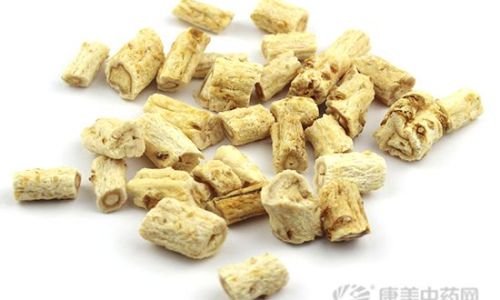Exploring the Culinary Delights and Nutritional Benefits of Adenophora Roots: A Comprehensive Guide to Their Edible Uses**
In the vast realm of herbal remedies and culinary ingredients, Adenophora roots, commonly known as “Shashen” in Chinese, occupy a unique niche. This perennial plant, belonging to the Campanulaceae family, boasts a rich history of medicinal use in traditional Chinese medicine (TCM) and has gradually found its way into the kitchens of many, where its delicate flavor and myriad health benefits are celebrated. This comprehensive guide aims to delve into the various edible uses of Adenophora roots, highlighting their nutritional profile, culinary applications, and potential health benefits, all while providing practical tips for incorporating this versatile ingredient into your daily diet.
Understanding Adenophora Roots
Before diving into the culinary aspects of Adenophora roots, it’s crucial to understand their botanical background. Adenophora species, such as Adenophora stricta (Common Shashen) and Adenophora tetraphylla (Four-Leafed Shashen), are native to Asia, particularly China, Japan, and Korea. These plants are characterized by their slender stems, heart-shaped leaves, and clusters of bell-shaped flowers that bloom in shades of blue, purple, or white.
The roots of Adenophora plants are the primary focus of both medicinal and culinary interest. They are harvested in the autumn, when the plant’s energy is concentrated in its underground parts, and are then dried for storage or immediate use. The roots have a sweet, slightly bitter taste and a cooling property, making them ideal for various dishes and remedies.

Nutritional Profile
Adenophora roots are a treasure trove of nutrients that contribute to their overall health-promoting properties. They are rich in polysaccharides, which are known for their immune-boosting and anti-inflammatory effects. Additionally, they contain saponins, flavonoids, and amino acids that support various bodily functions.
- Polysaccharides: These complex carbohydrates are known for their ability to enhance the immune system, promote wound healing, and exhibit antioxidant activity.
- Saponins: These compounds have been shown to lower blood cholesterol levels, exhibit anti-cancer properties, and possess anti-inflammatory effects.
- Flavonoids: These plant pigments are powerful antioxidants that help protect cells from damage caused by free radicals.
- Amino Acids: Essential building blocks of proteins, amino acids play a vital role in maintaining muscle mass, tissue repair, and overall bodily functions.
Moreover, Adenophora roots are a good source of dietary fiber, vitamins (such as vitamins A, C, and E), and minerals (including calcium, magnesium, and potassium). This nutrient-dense profile makes them an excellent addition to a balanced diet.
Culinary Applications
The versatility of Adenophora roots in the kitchen is as diverse as their nutritional benefits. From soups and stews to teas and desserts, these roots can be incorporated into a wide array of dishes, enhancing both flavor and nutrition.
Soups and Stews
One of the most popular ways to consume Adenophora roots is in soups and stews. Their sweet, earthy flavor complements both meat-based and vegetarian broths, adding depth and complexity to the dish.
- Chicken and Adenophora Soup: Simmer chicken pieces with sliced Adenophora roots, ginger, and water until tender. Season with salt and pepper to taste. This soup is perfect for cold weather, providing warmth and nourishment.
- Vegetable and Adenophora Stew: Combine diced vegetables like carrots, potatoes, and celery with Adenophora roots in a vegetable broth. Cook until all ingredients are tender, then season with herbs and spices for a hearty, nutritious meal.
Teas and Infusions
Making tea from Adenophora roots is a simple yet effective way to enjoy their health benefits. The roots can be steeped in hot water for a few minutes to create a refreshing, slightly sweet beverage.
- Basic Adenophora Tea: Boil water and add a few slices of dried Adenophora roots. Let it steep for 5-10 minutes, then strain and enjoy. For added flavor, you can sweeten it with honey or a natural sweetener.
- Honey Lemon Adenophora Tea: Enhance your Adenophora tea with a squeeze of lemon juice and a tablespoon of honey. This combination boosts the immune system and provides a refreshing twist to the traditional tea.
Desserts and Sweet Treats

Surprisingly, Adenophora roots can also be used in desserts, adding a subtle sweetness and a hint of healthfulness to your favorite treats.
- Adenophora Root Jelly: Boil Adenophora roots in water until softened, then blend with a sweetener like honey or maple syrup. Pour the mixture into molds and refrigerate until set. This jelly is not only delicious but also packed with nutrients.
- Adenophora Root Ice Cream: Infuse milk or a dairy-free alternative with Adenophora roots, then strain and sweeten with your choice of sweetener. Follow your standard ice cream recipe from this point, enjoying a creamy, nutritious dessert.
Stir-Fries and Salads
While less common, Adenophora roots can also be incorporated into stir-fries and salads for a unique twist on traditional dishes.
- Adenophora Root Stir-Fry: Slice the roots thinly and sauté them with vegetables like bell peppers, broccoli, and onions. Season with soy sauce, garlic, and ginger for a flavorful, nutritious side dish.
- Adenophora Root Salad: Shred the roots and mix them with a variety of greens, nuts, and seeds. Dress with a light vinaigrette made from olive oil, balsamic vinegar, and a touch of honey for sweetness.
Potential Health Benefits
Beyond their culinary appeal, Adenophora roots offer a range of potential health benefits that make them a valuable addition to your diet.
- Immune Support: The polysaccharides in Adenophora roots are known to stimulate the immune system, making them an excellent choice during cold and flu season.
- Anti-Inflammatory Effects: The saponins and flavonoids present in these roots exhibit anti-inflammatory properties, which can help reduce inflammation throughout the body.
- Digestive Health: The fiber content in Adenophora roots promotes healthy digestion, aiding in the prevention of constipation and maintaining a balanced gut microbiome.
- Blood Sugar Regulation: Preliminary studies suggest that Adenophora roots may help regulate blood sugar levels, making them beneficial for individuals with diabetes or prediabetes.
- Cancer Prevention: The antioxidants and saponins in these roots have shown promise in inhibiting the growth of certain cancer cells, although more research is needed to confirm these findings.
Conclusion
In conclusion, Adenophora roots are a versatile, nutrient-dense ingredient that can enhance both the flavor and nutritional profile of your meals. From soothing soups and teas to sweet desserts and savory stir-fries, there are countless ways to incorporate these roots into your daily diet. Their potential health benefits, ranging from immune support to anti-inflammatory properties, make them a valuable addition to any wellness routine.
As with any new ingredient, it’s important to start with small amounts and gradually increase your intake to assess your tolerance. If you’re pregnant, nursing, or have a medical condition, consult with a healthcare professional before incorporating Adenophora roots into your diet. With their unique blend of flavors and health benefits, Adenophora roots are a delightful and nutritious way to elevate your culinary experiences and support your overall well-being.
By exploring the diverse culinary applications of Adenophora roots and understanding their nutritional profile, you can harness their full potential, transforming them from a mere herbal remedy into a cherished component of your daily diet. Happy cooking and healthy eating!




0 comments